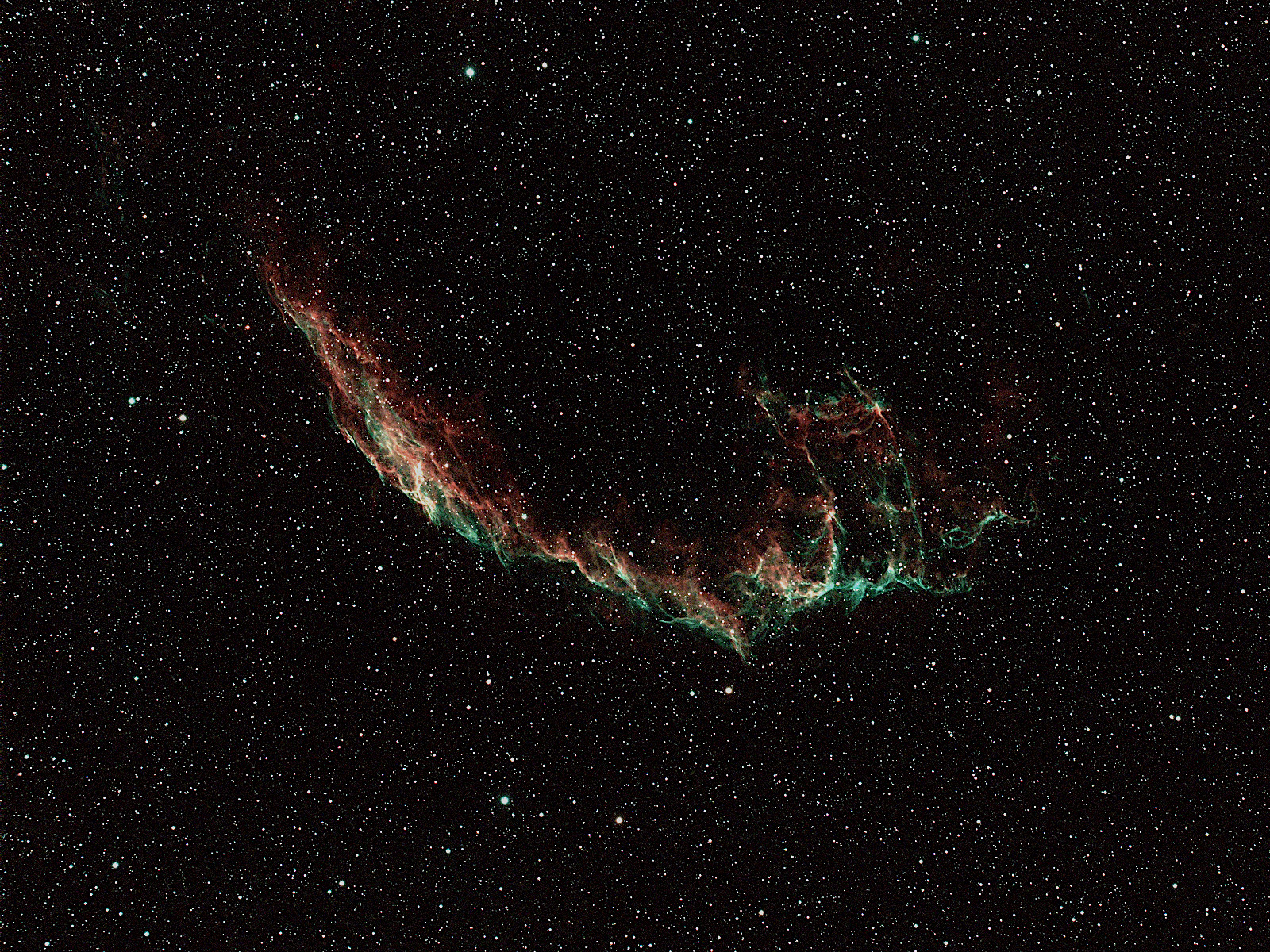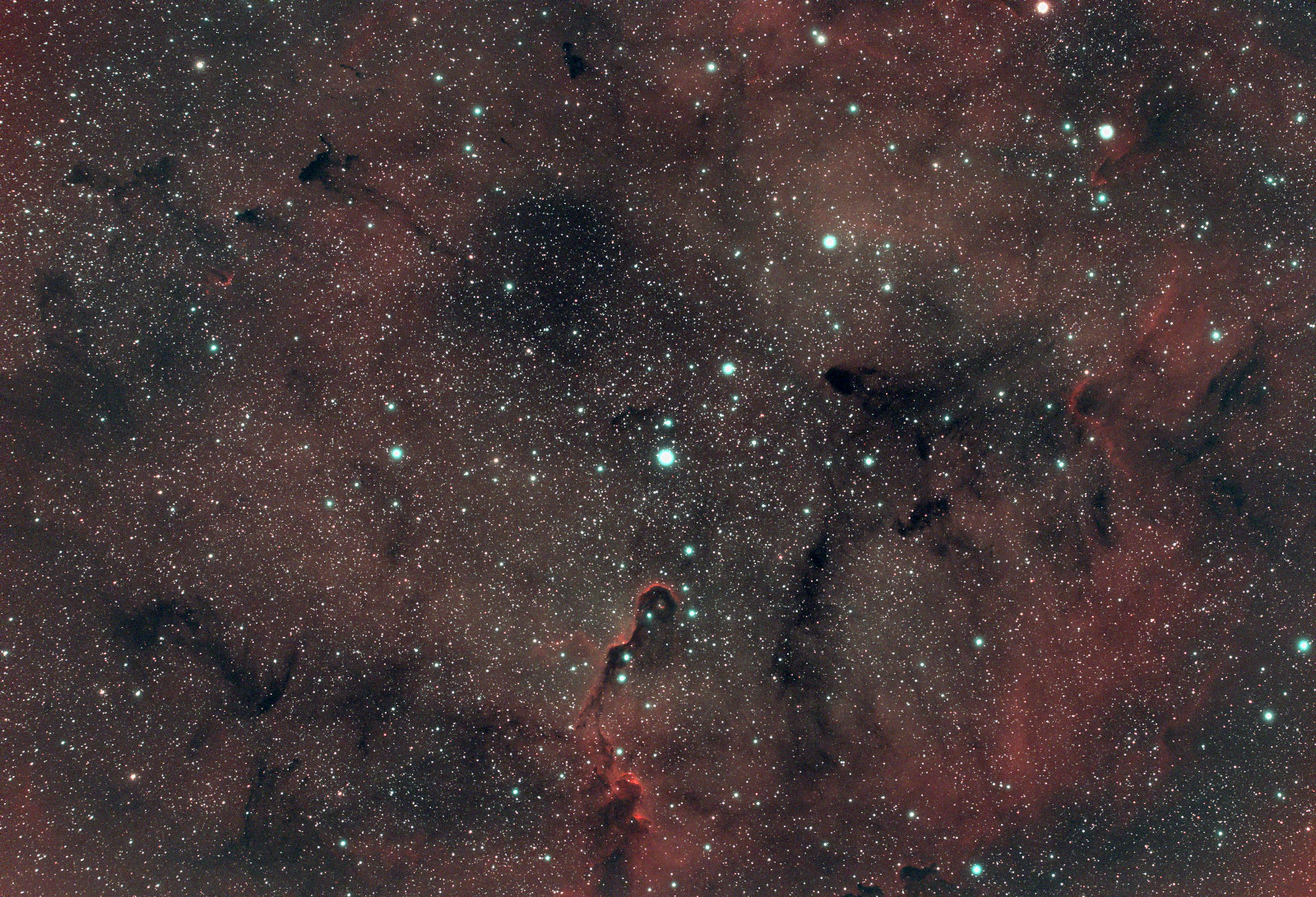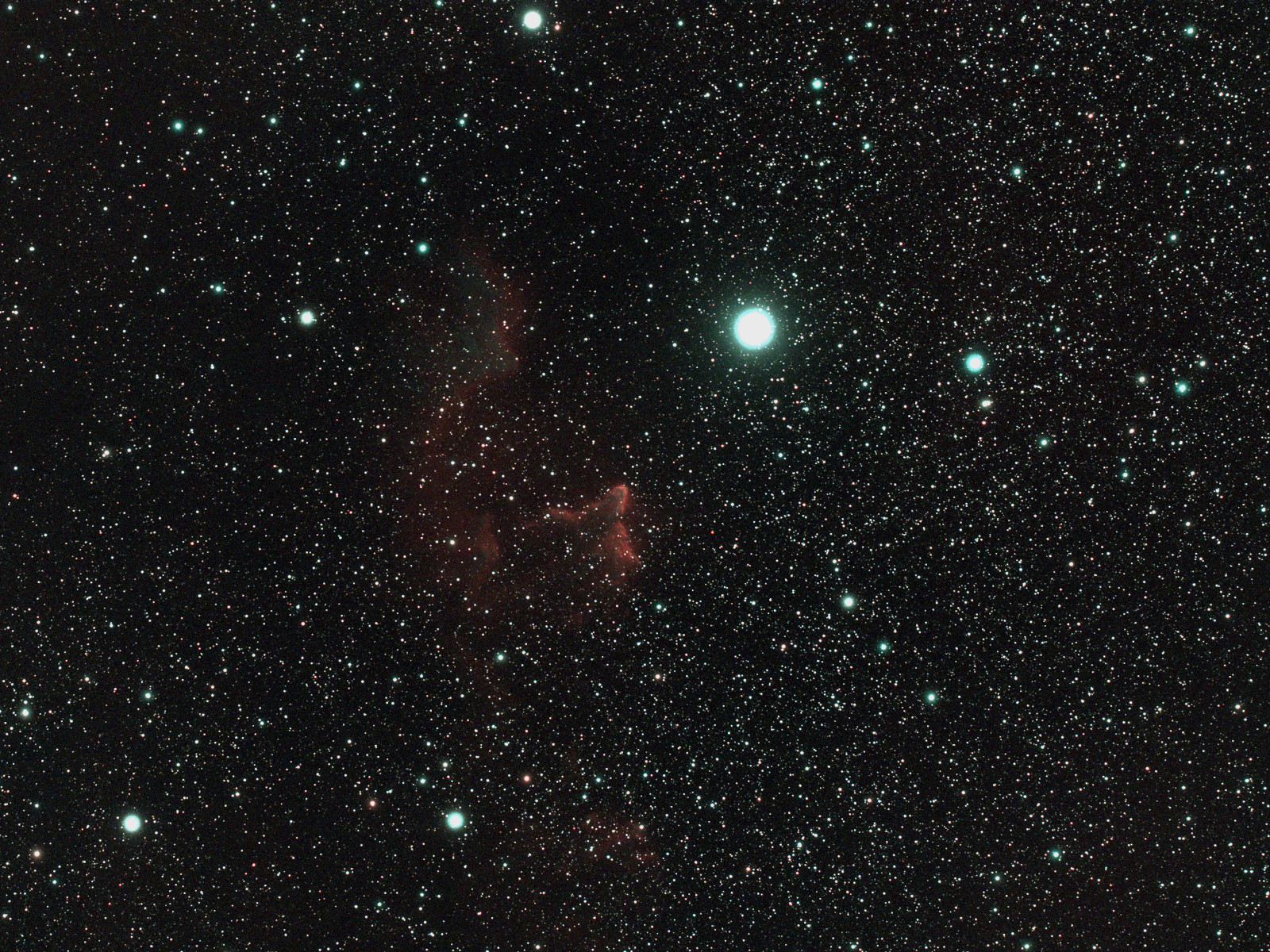An endless summer of clear sunny days followed by fog rolling in by evening… Just isn’t worth it to fire up the telescope. But I did manage this view of M33.
Witch Head Nebula, IC2118
I think most good astrophotographers plan their telescope runs in advance. I am not like that — I look at the objects that happen to be visible and take pictures to see what I get. I didn’t know that IC2118 was known as the Witch Head Nebula. Now I know that it is a famously dim, difficult-to-photograph object, and I will try again:
Do you see the witch? A profile view with a huge nose and an open mouth, eyes hidden in shadow. Facing right.
This was only five exposures; the individual exposures show absolutely nothing of the nebula — only through the magic of image stacking can anything be seen.
Comet Pix a failure
Comet C/2022 E3. Not a very good picture. Some faint star streaks and a stationary, vaguely comet-like blob.
Here’s an image of the comet moving against a stationary background of stars. Same data, just processed differently:
For the record, this is also comet C/2022 E3, not an exotic galaxy. The comet moves this much in about half an hour.
There are some tutorials on youtube about how to combine images like these into a composite with stationary stars and a stationary comet, but given the low-quality image of the comet, it probably isn’t worth it. Still, it would be educational. I have another run of exposures I may try to process. Best prepare for disappointment…
Mouth of the Kraken Nebula
Thor’s Helmet – SH2-298
Day before yesterday, I unpacked the telescope from its tiny rain shed and managed to snag a few frames of SH2-298. Feast your eyes on the aptly named “Thor’s Helmet”! It is a new object for me, and I was happy to get this image.
Last night I had every intention of getting an image of comet C-2022-E3. Conditions were good, but sleep overtook me. (The comet doesn’t get above the trees until after midnight.) But tonight, sky willing, I will photograph C-2022-E3.
It won’t visit us again for 50000 years. If we get our shit together we might visit it before it visits us.
Dragonfly Cluster, aka the Owl Cluster

By the naked eye, the night sky is only tiny points of light, occasionally blotted out by the moon. The enormous clouds of gas and dust, the majestic galaxies, are mostly invisible. So sometimes it’s nice to just see stars.
While the cluster looks more like an owl, I can also see the two bulbous eyes of a dragonfly and maybe a hint of a slender body.
Reprocessing reprocessing…
I’ve purchased a new plugin for PixInsight, called “BlurXTerminator” (BXT). It uses AI trained on astronomical data to sharpen stars, and the edges of nebula. It seems to work pretty well.
Here is a reprocessed version of the “Cygnus Wall” (part of NGC7000, the North American Nebula):
BXT actually works. This image is significantly sharper and more detailed than my previous version (though you have to look close). I worry if the new detail is “real” or manufactured? Is this picture a more accurate representation of reality?
Here is a reprocessed version of M81 and M82. The data for this image was collected back in February.
The major problem with this image is the overexposure of the central region of M81. One of these days I will work out the technique for fixing that, but for now, this isn’t bad. Once again, if you look closely, the enhanced fine delicate detail is apparent.
On a completely different topic, I started reading “A Tale of Two Cities” recently. Man, it’s so clear that Dickens was being paid by the word…
Catching up on astrophotos
The days are clear, but the mist rolls in about midnight, so it’s been difficult to take any pictures. Here are a few from the last month or so…

NGC7538 is sometimes called “The Brain” or “The Northern Lagoon”. It’s the bright knot at the top center. M52 is the open cluster bottom left of center.





Someday, maybe, I’ll move to a mountain top, with clear dark skies. For now, I live in haze and city lights.
The Witch’s Broom

This image is from 18 5-minute exposures. With luck, I’ll get some more tonight and sharpen it up a bit.
Edit: As promised, here’s the same image with additional exposures:

The single exposures aren’t bad on their own. However, the noise in the image is terrible:

(The electronics in the image sensor caused the odd artifact along the upper right edge.)
For your convenience, here are a couple of 100% crops of the single vs. combined images.
Single exposure:

Note the many tiny bright blue dots. These are defects in the image; pixels that fired inappropriately. There are many other fine grain flaws, but the blue dots stand out.
…with 65 sub-exposures:

The blue dots are gone.
When I started this hobby I thought the purpose of multiple exposures was to make dim objects brighter. But it isn’t — the goal, the magic sauce, is noise reduction. With many exposures, the errors cancel out, and a clearer view of the underlying reality emerges. We hope.
In the single exposure above, the inaccuracies of the individual sensor elements give a gritty character, as if the image was a sand painting made with somewhat impure sand. The image that results from combining the 65 sub-exposures has much less of that gritty appearance.
The Bubble (NGC7635)

NGC7635, the “Bubble Nebula”, is towards the lower left, and M2 is the open cluster along the upper right side.
The Hubble has, as usual, produced a lovely rendition of the Bubble — I guess we could call it the “Hubble Bubble“.
On a different note, the New Space Telescope has dropped its first images, and they are spectacular, as expected. Ditch astrophotographers such as myself tremble in awe. Several side-by-side comparisons of HST and NST images show wonderful improvements in clarity and detail. Stephan’s Quintet has special significance to me because it is the most difficult object I ever saw visually, back many years ago when my eyes were better and I had a 10″ Dobsonian. It was only discernable with averted vision, but definitely there.
However, the Hubble images are still as exquisite as they ever were. The universe has wonders at every scale — it is a fractal of wonder. The Hubble reveals wonders at its scale. The New Space Telescope reveals wonders at a different scale. And My Little Telescope (MLT) reveals wonders at its scale.









